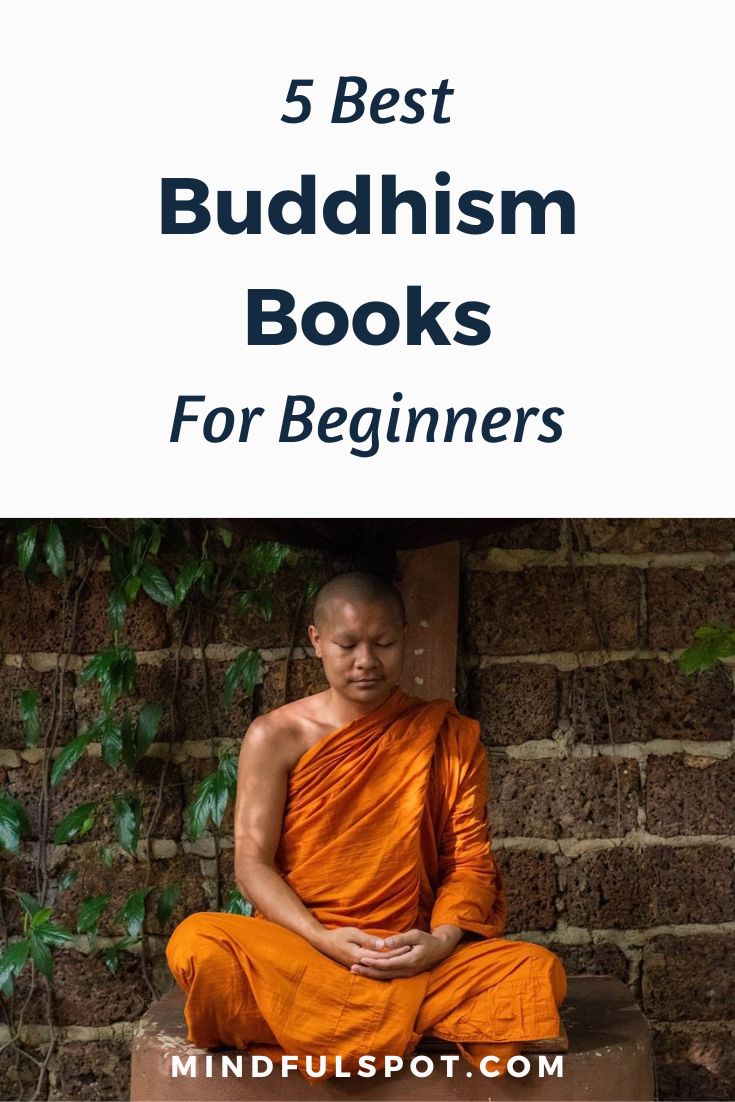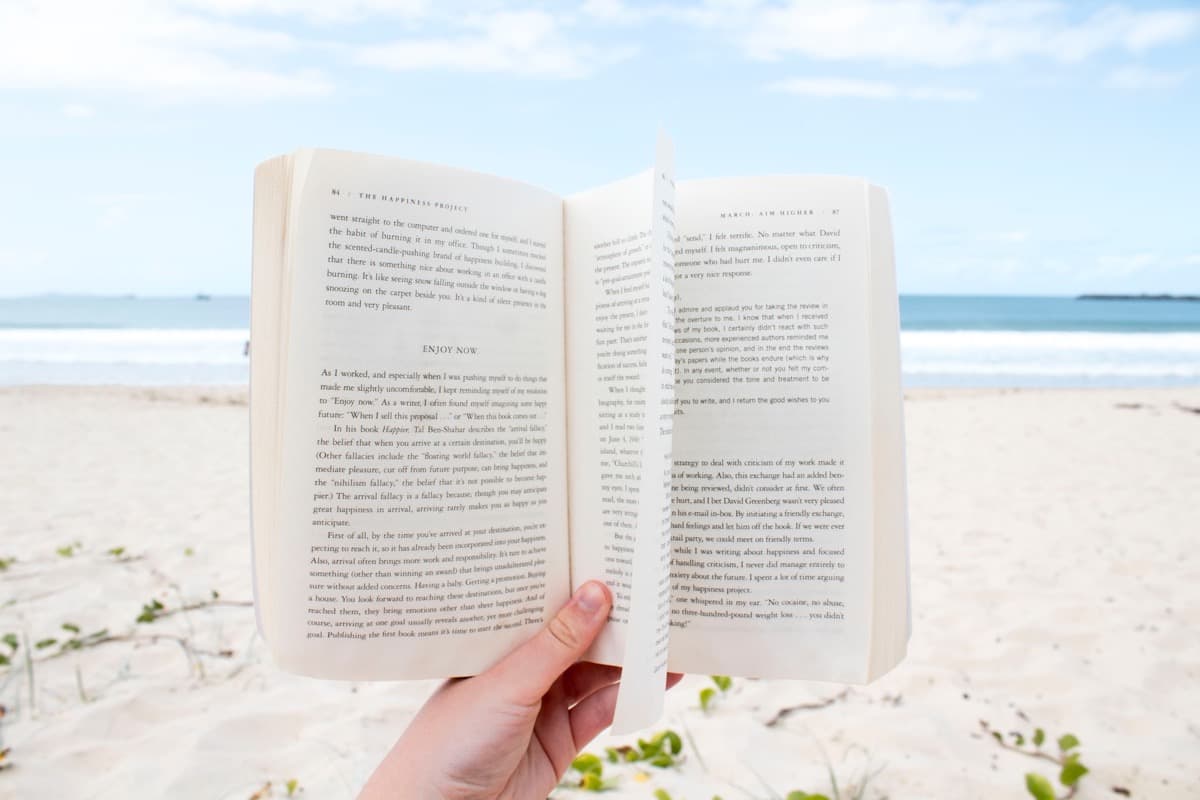If you want to learn about Buddhism but have no idea where to start and which books to read, I’ve got you covered: I’ve just went through my personal library to highlight five best Buddhism books for beginners.
I’ve arranged these books in a way that will help you learn all the basics and map out further inquires into more subtle and difficult topics.
From the Buddha’s life in his parents’ palace to his renunciation and enlightenment to famous teachings on human condition, these essential reads show us the root of our suffering and a path to true and lasting inner peace.
1. What the Buddha Taught
What the Buddha Taught is a reliable introduction to the complexities of Buddhism. It persistently enjoys popularity in colleges and contains a selection of texts from the original Pali scriptures.
The author of the book, Ven. Walpola Rahula, is a scholar-monk who trained in the Theravada tradition in Ceylon. Through a clear overview of ancient texts, he discovers a kernel of truth hidden beneath the umbrella of teachings, customs, and beliefs that is Buddhism.
Learn it first, then move comfortably on to other Buddhist works.
The author writes:

FREE Self-Test: How Spiritual Are You?
Buddhism is neither pessimistic nor optimistic. If anything at all, it is realistic, for it takes a realistic view of life and of the world.
It looks at things objectively (yathabhutam). It does not falsely lull you into living in a fool’s paradise, nor does it frighten and agonize you with all kinds of imaginary fears and sins.
It tells you exactly and objectively what you are and what the world around you is, and shows you the way to perfect freedom, peace, tranquility and happiness.
Related article: “Did the Buddha Say, ‘Life Is Suffering?’”
2. The Life of the Buddha: According to the Pali Canon
One of the first Englishmen to embrace Buddhism, Bhikkhu Nanamoli wrote a book that contains oldest authentic record of the Buddha’s life.
The Life of the Buddha is told through a unique framework of narrators, rendering ancient texts in a language marked by lucidity and dignity. It illuminates the Buddha’s compassion, lovingkindness, wisdom, and other qualities that informed his long tenure as the teacher of Dharma.
The Buddhist Publication Society in Sri Lanka is pleased to republish this esteemed book for the first time in the Americas to reach a new audience interested in Buddhist philosophy and a way of life.
The author writes:
The Buddha attained his complete enlightenment at Uruvelā in the Ganges plain, which is called the “Middle Country.”
As distances are reckoned in India, it was not very far from the immemorial holy city of Benares. His struggle to attain enlightenment had lasted six years, and he was then thirty-five years old.
From that time onward he wandered from place to place in central India for the space of forty-five years, constantly explaining the Four Noble Truths that he had discovered.
Related article: “Why Did the Buddha Start His Spiritual Journey?”
3. Dhammapada
The Dhammapada is a collection of verses, gathered from direct disciples of the Buddha who wanted to preserve what they had learned from their master.
Eknath Easwaran’s introduction to the Dhammapada gives an overview of the Buddha’s teachings that is clear and accessible for readers new to Buddhist philosophy.
His translation is based on the original Pali scriptures. Chapter introductions, notes, and a Sanskrit glossary place individual verses into the context of ancient Buddhist texts.
Eknath Easwaran writes:
If everything else were lost, we would need nothing more than The Dhammapada to follow the way of the Buddha.
Related article: “Dhammapada: the Buddha’s Simple Guide to Spiritual Practice”
4. For a Future to Be Possible: Buddhist Ethics for Everyday Life
In this book, Zen master and peace activist Thich Nhat Hanh argues for the universal applicability of The Five Mindfulness Trainings: not to kill, not to steal, not to commit adultery, not to lie, not to take intoxicants.
The author explains how people can come together around these trainings to explore a compassionate and a healthy way of life.
For the Future to Be Possible also includes insights from other Western meditation teachers, such as Jack Kornfield, Joan Halifax, Chan Khong, and others.
The author writes:
Two thousand five hundred years ago, the Buddha offered certain guidelines to his lay students to help them live peaceful, wholesome, and happy lives.
They were the Five Wonderful Precepts, and at the foundation of each of these precepts is mindfulness.
With mindfulness, we are aware of what is going on in our bodies, our feelings, our minds, and the world, and we avoid doing harm to ourselves and others.
Related article: “What Are the Five Buddhist Precepts?”
5. In the Buddha’s Words: An Anthology of Discourses from the Pali Canon
This book being the last item on this list is not a coincidence. I’ve put it here because it weaves everything you’ve learned from the reads above into an organic structure.
Divided into ten thematic chapters, In the Buddha’s Words reveals the full scope of the Buddha’s teachings: from family life to the path of renunciation and attainment of Nirvana.
And it does so by giving you access to the most important sutras of the Pali Canon — in modern terminology the Buddha’s “greatest hits.”
The author writes:
Though his teaching is highly systematic, there is no single text that can be ascribed to the Buddha in which he defines the architecture of the Dhamma. The purpose of the present book is to develop and exemplify such a scheme.
I here attempt to provide a comprehensive picture of the Buddha’s teaching that incorporates a wide variety of suttas into an organic structure.
Related article: “5 Best Bhikkhu Bodhi Books for Beginners”
Related article: “Is There an Organized Way to Study Buddhist Sutras?”

FREE mindfulness resources for stress relief
Complement this list of five best books about Buddhism with 3 best books on the history of mindfulness.

I’m a freelance writer and mindfulness advocate behind this blog. I started my meditation practice in 2014, and in 2017 I launched this website to share what I learn with others. Here are the three things you can do here:
1. Schedule a free consult if you want to learn Buddhist meditation.
2. Download free mindfulness resources for stress relief
3. Join Patreon for exclusive content and community meetings.








